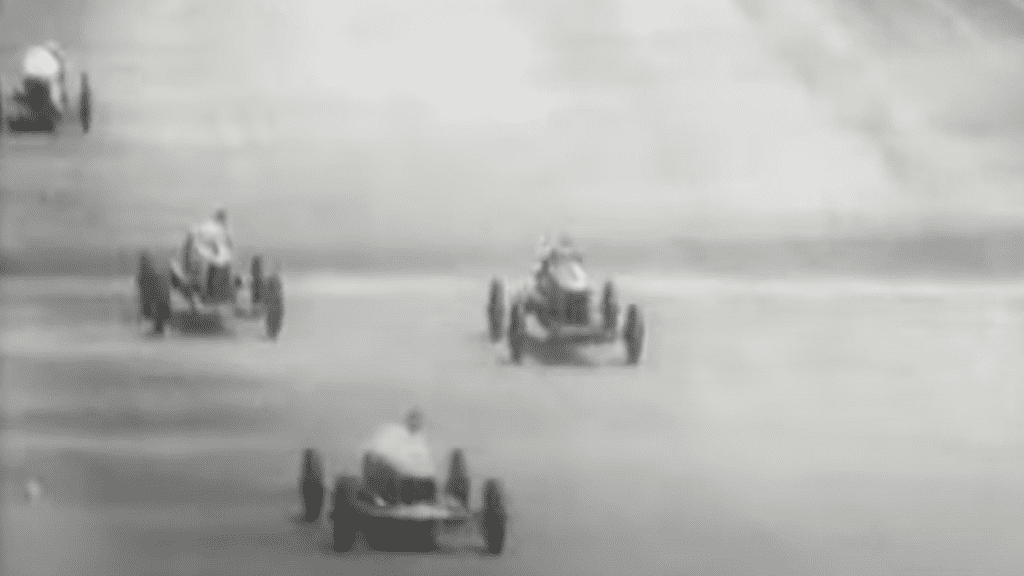Maude Yagle Is the Only Woman to Win the Indianapolis 500

In 1929, America looked quite different for women than the country we see today. Women had only recently been allowed to vote in elections, and they’d been recently been granted just a bit of control over their property and earnings. Margaret Sanger had fought for a woman’s right to learn about birth control, but there were still limits on the times and places women were allowed to work. America was mere months away from the Great Depression, an era that would see falling birth and marriage rates and a growing number of women enter the workforce in order to support themselves. It was in 1929 that Maude Yagle became the first and only woman to win the Indianapolis 500.
Racing Tech | The Most Powerful Engines in Racing Can Be Found in the NHRA
In case you missed it:
Details about Yagle’s early life are challenging to come by, but Kate Bekk of Motorsport Anthology reports that her research shows Yagle was born Maude Fagley on March 19, 1883. She hailed from a coal mining family, then found her way to Philadelphia, where she married successful businessman Edward C. Yagle. His increasing wealth enabled him to engage in motorsport, including by sponsoring local racer Ray Keech in his pursuit of the World Land Speed Record. That gave Yagle her first taste of motorsport, and she seemed to be hooked.
To say that women weren’t welcome at the Indianapolis Motor Speedway in that era — at least in a professional capacity — would be an understatement. Women were banned from entering the press and pit areas until 1971 (and that was thanks to the force that was journalist Denise McCluggage), and no woman would get behind the wheel until Janet Guthrie qualified for the iconic race in 1977. Yes, women were allowed to help sponsor cars or participate with a team in other ways, but when it came to actually encouraging women to meaningfully engage with the running of the race, no one was all that willing to help a woman out.
Not until Yagle.
In 1928, Yagle acquired a rear-wheel-drive car owned by the deceased Frank Lockhart, IndyStar reports, and entered the car in races under the name M. A. Yagle in an effort to prevent drawing attention to herself as a woman. She hired Ray Keech, a former World Land Speed record holder and the man whose record Lockhart was trying to beat at the time of his death, to drive the Miller Simplex Piston Ring Special in 1928, and the machine was massively successful, winning three of the six races it entered that year — but the Indy 500 couldn’t yet be placed on the victory list. Keech suffered mechanical trouble, and he finished in fourth place.
The next year, though, was far more successful. Once again, Yagle entered the Miller Simplex in the 500, retaining her highly successful driver into the 1929 season.
The 1929 Indy 500 was one of transition. It was the final event to be contested with a 91.5 cubic-inch displacement engine, and it also saw a healthy mix of front- and rear-wheel drive cars, with the front-wheel drive machines dominating qualifying. Keech, in his rear-wheel-drive machine, started in sixth. For the first year, no one used a riding mechanic.
Within the first 10 laps of the race, Keech has pushed his way up to second place but was forced to make a long stop on lap 21 to change a tire. His pace, though, was just as impressive as it had been at the start: he rejoined the field in 10th and quickly started picking off cars on his way to the lead. A three-minute stop later in the race to top up with fuel and change his three remaining tires didn’t hamper his momentum, and he cruised to an unchallenged victory when leader and reigning champion Louis Meyer lost fuel pressure on lap 157.
Keech’s victory was one for the history books. As he celebrated in victory lane, though, his record-breaking team owner Maude Yagle could do little more than watch from the grandstands.
This story, though, isn’t necessarily a happy one. At the time of Yagle’s 1928 entry, newspapers quickly uncovered her true identity. From the IndyStar:
But Ray Priest of Universal Service news service took notice and published a story under the headline “Goshalmighty! Now look where the women are horning in!” The story said the “weaker sex invades the speed game for no good reason at all, but it makes story.”
Yagle’s 500 victory should have silenced her critics, but Keech’s reign as champion lasted just over two weeks. On June 15, 1929, Keech was involved in a fatal accident at the Altoona 200-Mile Race on a board track in Pennsylvania. Details about the four-car crash are difficult to parse out, and multiple different versions of events were reported. One driver struck a safety railing, knocking it into the track. Whether Keech struck the railing himself, or struck another car trying to avoid the railing, or both, is unclear. Reports agree that he was thrown from the car, but whether he was crushed by his own careening chassis or run over by another driver is unclear. What was clear, though, was that Keech was dead by the time the doctors arrived. Allentown, PA newspaper The Morning Call reported that he was killed driving the Simplex Special.
Yagle repaired the car and hired a new driver, Jimmy Gleason, to compete just three months after Keech’s death. He flipped the car in a race at Mineola Fairgrounds in New York and suffered severe injuries. Newspapers reported that Yagle, who witnessed the wreck, was taken to the hospital with “epileptic fits and shock.” Both recovered, and they teamed up again to complete the 1929 season in October.
For 1930, Yagle hired a new face in Frank Farmer, but by now Yagle’s car was rumored to be jinxed — but for Farmer and the other drivers who piloted the machine, the rumors only turned out to be a mixed bag at best. Farmer was able to set a new lap record at Langhorne Speedway, a Pennsylvania dirt oval, but changing tides saw it fail to be competitive in the Indianapolis 500. When it came to competing on local tracks, however, the Yagle-Miller Special was coveted enough that drivers were willing to ignore its supposedly ill fate.
And then, in August 1932, Frank Farmer collided with another driver during a heat race. Both drivers died, and after seven years, Yagle’s car was finally tucked away.
From there, it’s difficult to know what happened with Yagle — but there’s no record of her ever having entered another race as a car owner. No one reported on her reaction. We can’t say for certain why, exactly, she withdrew from motorsport, but in the obituary following her death in 1968 at the age of 85, there was no mention of her racing endeavors.
Yagle wasn’t the only woman to enter a vehicle in the 500, but she undoubtedly remains the most successful, which can be a sobering though considering the 100-plus years of racing at Indianapolis. Her place in history deserves to be recognized; then, we can truly begin pursuing our next race-winning woman team owner.






